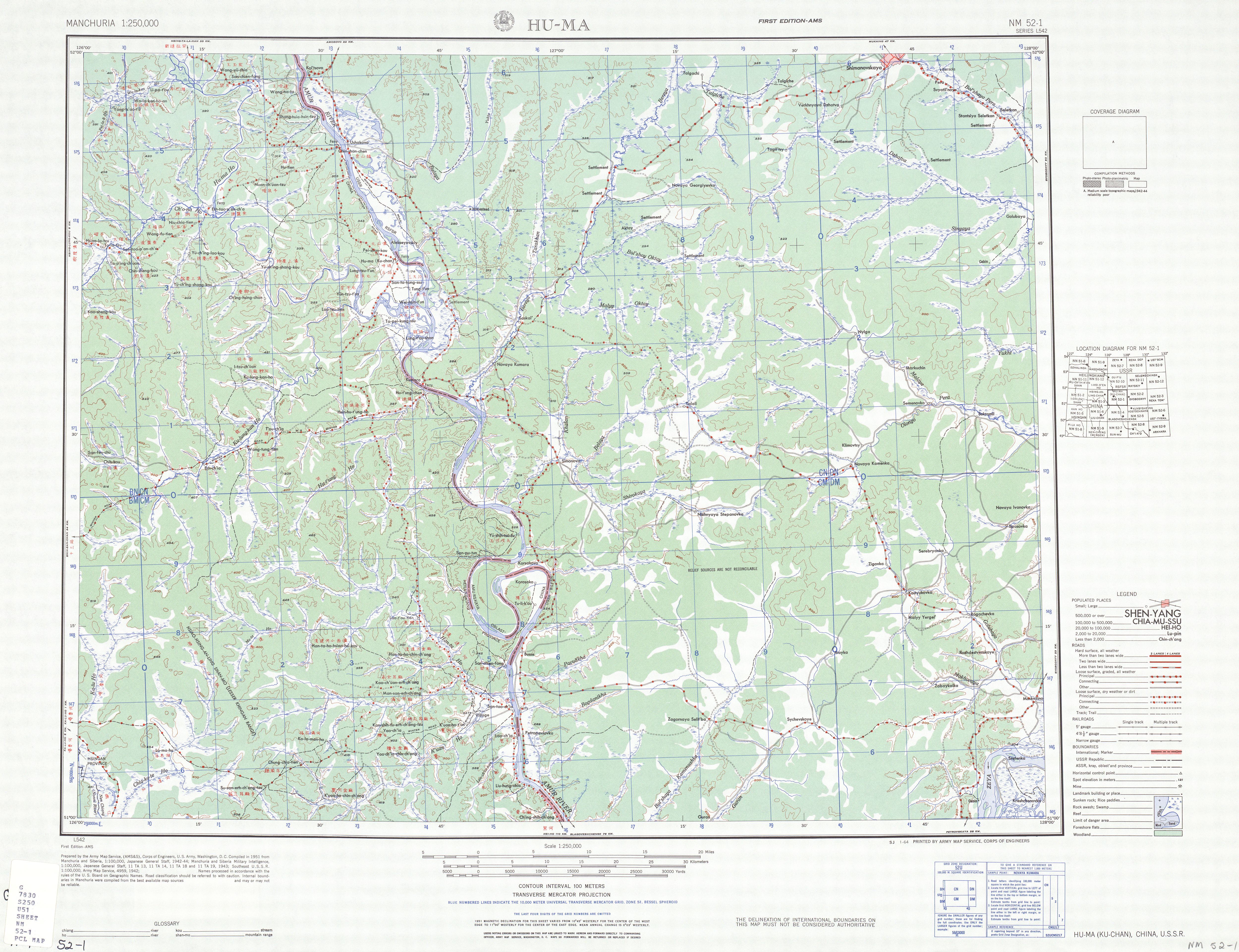|
Huma County
Huma County (; Manchu: Hūmar Siyan; russian: Кумары) is a county in the far north of the Heilongjiang province, People's Republic of China. The county seat is located on the right (southwestern) bank of the Amur River, a few kilometers upstream from the fall of the Huma River (formerly also known as Houmar) into the Amur. It is under the administration of the Daxing'anling Prefecture. The opposite side of the Amur River is in Amurskaya Oblast', Russia, where there is a village with the same name in Russified form, ''Kumara'' (russian: Кумара) History Kumarsk, the predecessor of the present-day Huma, was a fortified Russian town in the Amur River region, founded in 1652 by Yerofey Khabarov and his companions, during his retreat from Achansk, corresponding to the present-day Khabarovsk, where he was besieged by Manchu and Daur allied forces. On 13 March 1655, the Komar fortress, defended by the ataman Onufriy Stepanov and his 500 Cossacks, was besiege ... [...More Info...] [...Related Items...] OR: [Wikipedia] [Google] [Baidu] |
County (People's Republic Of China)
Counties ( zh, t=縣, s=县, hp=Xiàn), formally county-level divisions, are found in the third level of the administrative hierarchy in Provinces and Autonomous regions and the second level in municipalities and Hainan, a level that is known as "county level" and also contains autonomous counties, county-level cities, banners, autonomous banners and City districts. There are 1,355 counties in Mainland China out of a total of 2,851 county-level divisions. The term ''xian'' is sometimes translated as "district" or "prefecture" when put in the context of Chinese history. History ''Xian'' have existed since the Warring States period and were set up nationwide by the Qin Dynasty. The number of counties in China proper gradually increased from dynasty to dynasty. As Qin Shi Huang reorganized the counties after his unification, there were about 1,000. Under the Eastern Han Dynasty, the number of counties increased to above 1,000. About 1400 existed when the Sui dynasty abolish ... [...More Info...] [...Related Items...] OR: [Wikipedia] [Google] [Baidu] |
Daur People
The Daur people (Khalkha Mongolian: Дагуур, ''Daguur''; ) are a Mongolic people in Northeast China. The Daur form one of the 56 ethnic groups officially recognised in the People's Republic of China. They numbered 131,992 according to the latest census (2010) and most of them live in Morin Dawa Daur Autonomous Banner in Hulun Buir, Inner Mongolia and Meilisi Daur District in Qiqihar, Heilongjiang of China. There are also some near Tacheng in Xinjiang, where their ancestors were moved during the Qing dynasty. Language The Dagur language is a Mongolic language. There is a Latin-based orthography which has been devised by a native Daur scholar. The Dagur language retains some Khitan substratal features, including a number of lexemes not found in other Mongolic languages. It is made up of three dialects: Batgan, Hailar, Qiqihar. During Qing rule, some Daur spoke and wrote Manchu as a second language. History Genetically, the Daurs are descendants of the Khitan, as ... [...More Info...] [...Related Items...] OR: [Wikipedia] [Google] [Baidu] |
Treaty Of Nerchinsk
The Treaty of Nerchinsk () of 1689 was the first treaty between the Tsardom of Russia and the Qing dynasty of China. The Russians gave up the area north of the Amur River as far as the Stanovoy Range and kept the area between the Argun River and Lake Baikal. This border along the Argun River and Stanovoy Range lasted until the Amur Annexation via the Treaty of Aigun in 1858 and the Convention of Peking in 1860. It opened markets for Russian goods in China, and gave Russians access to Chinese supplies and luxuries. The agreement was signed in Nerchinsk on August 27, 1689. The signatories were Songgotu on behalf of the Kangxi Emperor and Fyodor Golovin on behalf of the Russian tsars Peter I and Ivan V. The authoritative version was in Latin, with translations into Russian and Manchu, but these versions differed considerably. There was no official Chinese text for another two centuries, but the border markers were inscribed in Chinese along with Manchu, Russian and Latin. Lat ... [...More Info...] [...Related Items...] OR: [Wikipedia] [Google] [Baidu] |
Qing Dynasty
The Qing dynasty ( ), officially the Great Qing,, was a Manchu-led imperial dynasty of China and the last orthodox dynasty in Chinese history. It emerged from the Later Jin dynasty founded by the Jianzhou Jurchens, a Tungusic-speaking ethnic group who unified other Jurchen tribes to form a new "Manchu" ethnic identity. The dynasty was officially proclaimed in 1636 in Manchuria (modern-day Northeast China and Outer Manchuria). It seized control of Beijing in 1644, then later expanded its rule over the whole of China proper and Taiwan, and finally expanded into Inner Asia. The dynasty lasted until 1912 when it was overthrown in the Xinhai Revolution. In orthodox Chinese historiography, the Qing dynasty was preceded by the Ming dynasty and succeeded by the Republic of China. The multiethnic Qing dynasty lasted for almost three centuries and assembled the territorial base for modern China. It was the largest imperial dynasty in the history of China and in 1790 the f ... [...More Info...] [...Related Items...] OR: [Wikipedia] [Google] [Baidu] |


